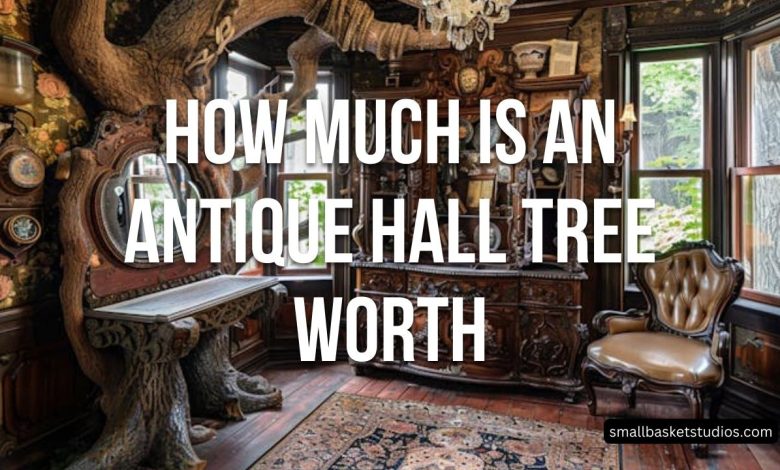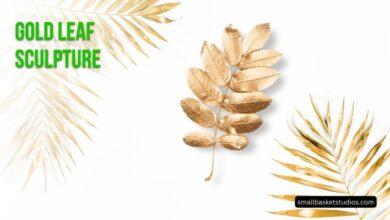
In the realm of antique furniture, few pieces evoke a sense of timeless elegance and functionality quite like the iconic hall tree. These stately structures, once a staple in the entryways of Victorian-era homes, have transcended their original purpose to become highly coveted treasures among collectors and connoisseurs alike. Determining the value of an antique hall tree is a multifaceted endeavor, one that requires an in-depth understanding of its rich history, craftsmanship, and unique features. This article aims to provide a comprehensive exploration of the factors that influence the worth of these beloved pieces, serving as a guide for both seasoned collectors and those just embarking on their antique journey.
Tracing the Roots
The Evolution of Hall Trees Before delving into the intricacies of valuation, it’s essential to trace the historical roots and evolution of hall trees. Originally designed as functional pieces to accommodate the outerwear and accessories of Victorian households, these elegant structures quickly became canvases for skilled woodworkers and cabinetmakers to showcase their artistry.

The earliest documented examples of hall trees can be traced back to the late 18th century, but their heyday was undoubtedly during the Victorian era, spanning from 1837 to 1901. It was during this period that these pieces reached the pinnacle of their popularity, with various styles emerging, each reflecting the design sensibilities of the time. From the ornate and intricately carved Gothic Revival pieces to the more streamlined and minimalist examples of the Arts and Crafts movement, the diversity of hall tree designs is a testament to the creativity and skill of their makers.
Unraveling the Factors that Shape Value
When it comes to assessing the worth of an antique hall tree, several key factors intertwine to create a intricate tapestry of value. Understanding and evaluating these elements is crucial for collectors and appraisers alike.
Age and Period
The age and period in which a hall tree was crafted play a pivotal role in determining its value. Pieces dating back to the 18th and early 19th centuries are generally considered the most valuable, as they represent the earliest examples of this furniture form. However, it’s important to note that hall trees from the Victorian era, particularly those crafted during the latter half of the 19th century, also command high prices due to their historical significance and intricate designs.
Condition: A Tale of Preservation
Like any antique, the condition of a hall tree is a critical factor in establishing its worth. Pieces that have been meticulously preserved and maintained in their original state, with minimal signs of wear or damage, are highly coveted and command premium prices. Conversely, hall trees that have undergone significant restoration or have sustained significant damage may have a lower value, although expert restoration can sometimes enhance the piece’s appeal to collectors.
Craftsmanship and Materials: A Celebration of Artistry

The level of craftsmanship and the quality of materials used in the construction of a hall tree can significantly impact its value. Pieces crafted by renowned makers or those featuring exceptional woodcarving, marquetry, or inlay work are highly prized and can command substantial prices. Similarly, hall trees made from rare or exotic woods, such as mahogany, walnut, or oak, tend to be more valuable than those constructed from more common materials.
Provenance and Historical Significance: Tracing the Footsteps of Time
A hall tree’s provenance, or its documented history and ownership, can greatly enhance its value. Pieces with a well-documented lineage, especially those with ties to notable families, events, or locations, are highly sought after by collectors and museums alike. Additionally, hall trees with historical significance, such as those associated with a particular architectural style or design movement, tend to command higher prices.
Rarity and Uniqueness: The Allure of the Exceptional
Like any collectible item, rarity is a significant factor in determining the value of an antique hall tree. Pieces that are one-of-a-kind or part of a limited production run are highly coveted and can command premium prices. Similarly, hall trees featuring unique designs, unusual materials, or exceptional craftsmanship are often more valuable than their more commonplace counterparts.
Seeking Professional Expertise: The Art of Appraisal
Given the multitude of factors that influence the value of an antique hall tree, it’s essential to seek the expertise of professionals when attempting to determine its worth. Reputable antique dealers, appraisers, and auction houses can provide invaluable insights and assessments based on their extensive knowledge and experience.
When seeking an appraisal, it’s crucial to provide as much information as possible about the piece, including its age, provenance, condition, and any available documentation or photographs. This information can assist the appraiser in accurately evaluating the hall tree and providing a fair market value assessment.
It’s also important to note that the value of an antique hall tree can fluctuate based on market trends and demand. Regular monitoring of auction results and sales data can provide valuable insights into the current market conditions and help collectors make informed decisions when buying or selling these treasured pieces.
Preserving the Legacy: Caring for Antique Hall Trees
Proper care and preservation are essential for maintaining the value and integrity of an antique hall tree. These beloved pieces deserve the utmost respect and attention to ensure their longevity for generations to come. Here are some tips to ensure the preservation of these treasured furnishings:
Environmental Control: Creating a Safe Haven
Antique furniture, including hall trees, is susceptible to damage from environmental factors such as humidity, temperature fluctuations, and direct sunlight. Maintaining a consistent temperature and humidity level, as well as minimizing exposure to direct sunlight, can help prevent warping, cracking, or discoloration.
Gentle Cleaning: Embracing the Patina
Regular gentle cleaning is recommended to remove dust and dirt buildup, which can lead to damage over time. Use a soft, lint-free cloth and a mild wood cleaner specifically formulated for antiques. Avoid using harsh chemicals or abrasive cleaners, as they can damage the wood’s finish and patina, which is a testament to the piece’s age and history.
Professional Restoration: Preserving Authenticity
If your antique hall tree requires extensive restoration or repairs, it’s essential to seek the services of a professional conservator or restoration specialist. Improper restoration techniques can significantly diminish the value and integrity of the piece, while experienced professionals can ensure the preservation of its authenticity and historical significance.
Proper Storage and Handling: Safeguarding the Treasure
When not in use or on display, store your antique hall tree in a dry, climate-controlled environment, and ensure it is properly protected from potential damage during transportation or moves. Careful handling and storage will safeguard these treasures for future generations of collectors and admirers.
Frequently Asked Questions (FAQ)
How can I determine the age of my antique hall tree?
A: There are several ways to estimate the age of an antique hall tree. Look for maker’s marks, labels, or stamps that may provide clues about the manufacturing date or period. Additionally, examining the construction techniques, materials, and design elements can help identify the era in which the piece was crafted. If you’re unsure, consulting with an experienced antique dealer or appraiser is recommended.
What is the difference between an antique and a vintage hall tree?
A: Antique hall trees generally refer to pieces that are at least 100 years old, while vintage hall trees are typically between 50 and 100 years old. Antiques are often more valuable due to their age and historical significance, but well-preserved vintage pieces can also command high prices, especially if they are from desirable periods or feature exceptional craftsmanship.
Can I refinish or restore an antique hall tree myself?
A: While minor cleaning and touch-ups may be acceptable, it’s generally advisable to seek professional assistance for major restoration or refinishing projects. Improper techniques can significantly diminish the value and integrity of an antique hall tree, and expert conservators or restorers have the knowledge and skills to ensure the piece is properly preserved.
Are there any specific styles or makers that are more valuable than others?
A: Certain styles and makers of antique hall trees are more highly coveted and valuable than others. For example, pieces from the Gothic Revival or Arts and Crafts movements, as well as those crafted by renowned makers like Herter Brothers or Aesthetic Movement designers, tend to command higher prices. Additionally, hall trees with exceptional woodcarving, marquetry, or inlay work are often more valuable.
Conclusion:
The value of an antique hall tree depends on its age, condition, materials, maker, rarity, and provenance. Older pieces from the 19th century or before in excellent original condition made of quality woods like oak or mahogany by renowned makers tend to be the most valuable. Uncommon styles, superior craftsmanship, and a documented ownership history can significantly increase worth. Prices span a broad range – from a few hundred dollars for simple, damaged pieces to tens of thousands for extraordinary exemplars. However, most fall between $500 to $5,000, allowing collectors to find hall trees matching their budgets and tastes. Careful evaluation is key to determining appropriate value.




